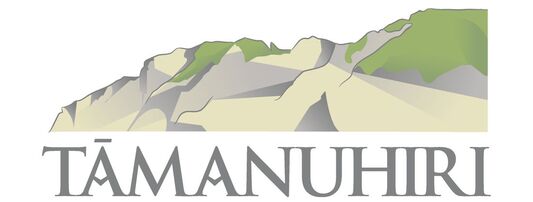TE MURIWAI MARAE
Ko Mātiti te taumata tirotiro o Tāmanuhiri
Ko Maraetaha te awa
Ko Horouta te waka
Ko Ngāi Tāmanuhiri te iwi
Ko Te Muriwai te marae
Trustees:
Tom Stone, Reweti Ropiha, Shane Taylor, Tanith Wirihana Te Waitohioterangi
Angus Ngarangioue, Mangu Kemp
Bookings:
[email protected]
Te Muriwai Mai Tawhiti was named by the crew of the Horouta waka, in remembrance of Te Muriwai that was left behind in their beloved homeland of Hawaiki.
The settlement that was established many generations ago, continues on in the village to this day.
The wharenui or meeting house as we know it today, is called Te Poho o Tāmanuhiri. It was moved from Rō Pā (The Pā) to its present site in 1916. Rising waters, the threat of typhoid and the movements of the Waipaoa River forced the people to move further inland.
Rō Pā was originally situated on the edge of Te Wherowhero lagoon, at a settlement known as Pīti Tāone (Beach Town). Photographs in the Tairāwhiti Museum document the meeting house at Pīti Tāone in 1896.
The World War I Memorial Hall was built after Waiari. The dining room, known as Maungarongo, was erected in 1946 and features carvings by Pine Taiapa.
Te Poho o Tāmanuhiri is a painted whare. While it has whakairo (carvings) on the exterior, it has a painted interior. This method of adornment was popular in the late 1800s to the early 1900s. Some of the best examples of painted meeting houses are in the Tūranga (Gisborne) district.
The free flowing graphic forms of kōwhaiwhai have inspired many artists from Ngāi Tāmanuhiri. The spirited, bold style of painting in the wharenui are evident in many art forms created today by descendants of the marae.
The interior was recently restored by Dean Whiting from the Historical Places Trust. Our iwi conservator is Scott Riki.
The settlement that was established many generations ago, continues on in the village to this day.
The wharenui or meeting house as we know it today, is called Te Poho o Tāmanuhiri. It was moved from Rō Pā (The Pā) to its present site in 1916. Rising waters, the threat of typhoid and the movements of the Waipaoa River forced the people to move further inland.
Rō Pā was originally situated on the edge of Te Wherowhero lagoon, at a settlement known as Pīti Tāone (Beach Town). Photographs in the Tairāwhiti Museum document the meeting house at Pīti Tāone in 1896.
The World War I Memorial Hall was built after Waiari. The dining room, known as Maungarongo, was erected in 1946 and features carvings by Pine Taiapa.
Te Poho o Tāmanuhiri is a painted whare. While it has whakairo (carvings) on the exterior, it has a painted interior. This method of adornment was popular in the late 1800s to the early 1900s. Some of the best examples of painted meeting houses are in the Tūranga (Gisborne) district.
The free flowing graphic forms of kōwhaiwhai have inspired many artists from Ngāi Tāmanuhiri. The spirited, bold style of painting in the wharenui are evident in many art forms created today by descendants of the marae.
The interior was recently restored by Dean Whiting from the Historical Places Trust. Our iwi conservator is Scott Riki.
WAIARI MARAE
Ko Mātiti te taumata tirotiro o Tāmanuhiri
Ko Maraetaha te awa
Ko Horouta te waka
Ko Ngāi Tāmanuhiri te iwi
Ko Waiari te marae
Trustees:
Tom Stone, Reweti Ropiha, Shane Taylor, Tanith Wirihana Te Waitohioterangi
Angus Ngarangioue, Mangu Kemp
Bookings:
[email protected]
Waiari means ‘underground waters’. Close to the marae site, there are underground springs that run from the hills to the ocean. That is the significance of the name Waiari.
The Riki whānau built the meeting house in 1912, according to Angela Hair. Other sources state that the building came about due to Pākowhai land block funds. But that the land belonged to the Riki whānau.
The Riki whānau built the meeting house in 1912, according to Angela Hair. Other sources state that the building came about due to Pākowhai land block funds. But that the land belonged to the Riki whānau.
RANGIWAHO MARAE
Ko Oraki te maunga
Ko Tarakihinui te awa
Ko Takitimu te waka
Ko Ngāi Tāmanuhiri te iwi
Ko Rangiwaho te marae
Trustees:
Mihi Harrington, Ihipera Whakataka, Kay Robin, Anaru Richardson,
Noel Pohatu, Jody Toroa
Bookings:
Email - [email protected]
Phone - 022 044 0733
Rangiwaho Marae sits at the foot of Ōraki, in the area known as Tawatapu. Rangiwaho is named after the grandson of Tāmanuhiri. Rangiwaho was the father of Tutekawa, fondly remembered as ‘The Man’ by the people of Ngāi Tāmanuhiri
Today, the area is known as Bartletts, after Tom Bartlett. He was an early whaler and prominent businessman, who married into the iwi. Bartletts is situated thirty kilometres south of Gisborne, on State Highway 2. The old school on the left and the marae on the right are the last buildings you see on the road before it ascends into the Wharerata forest.
Rangiwaho sits next to his wahine Rongomaiwaiata (our wharekai) which was opened in 2018.
Today, the area is known as Bartletts, after Tom Bartlett. He was an early whaler and prominent businessman, who married into the iwi. Bartletts is situated thirty kilometres south of Gisborne, on State Highway 2. The old school on the left and the marae on the right are the last buildings you see on the road before it ascends into the Wharerata forest.
Rangiwaho sits next to his wahine Rongomaiwaiata (our wharekai) which was opened in 2018.
Contact Us
|
299 Gladstone Road
Gisborne 4010 PO Box 746 Gisborne 4040 |
|
